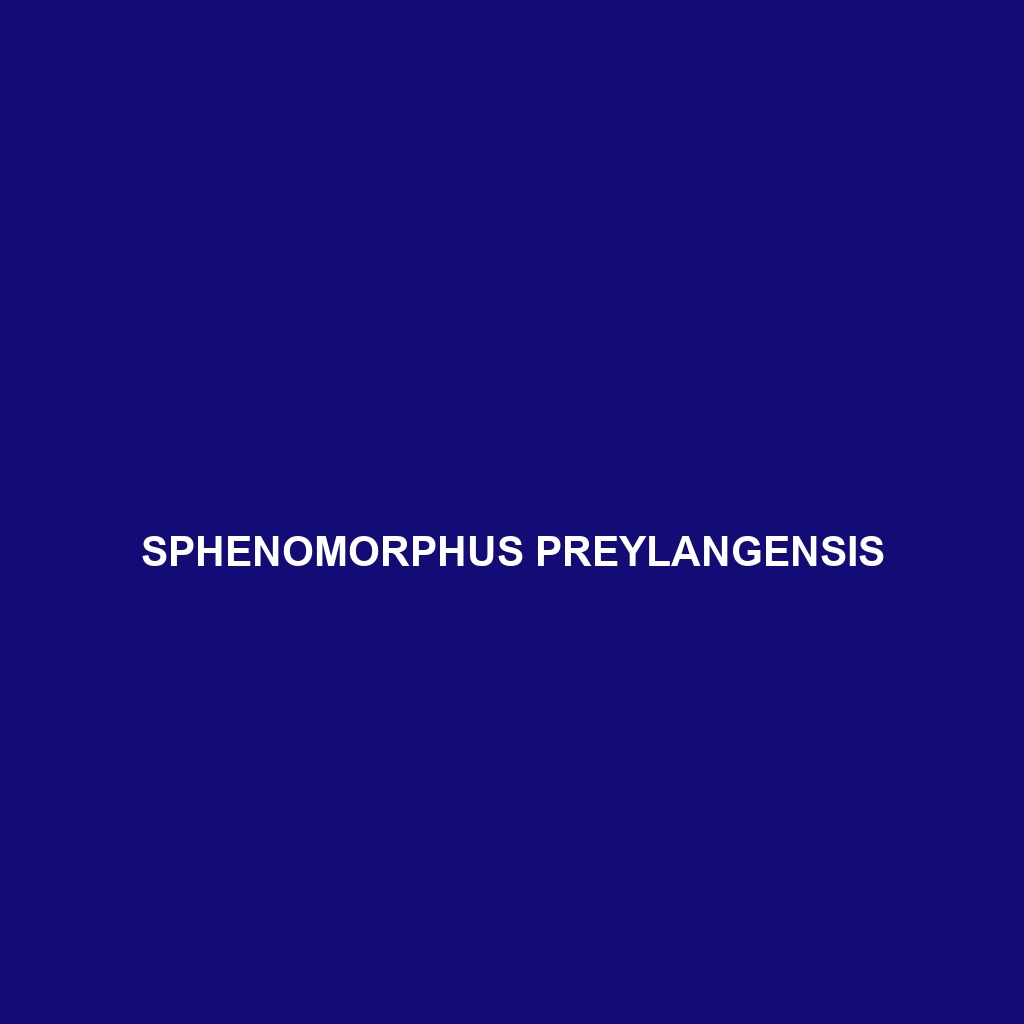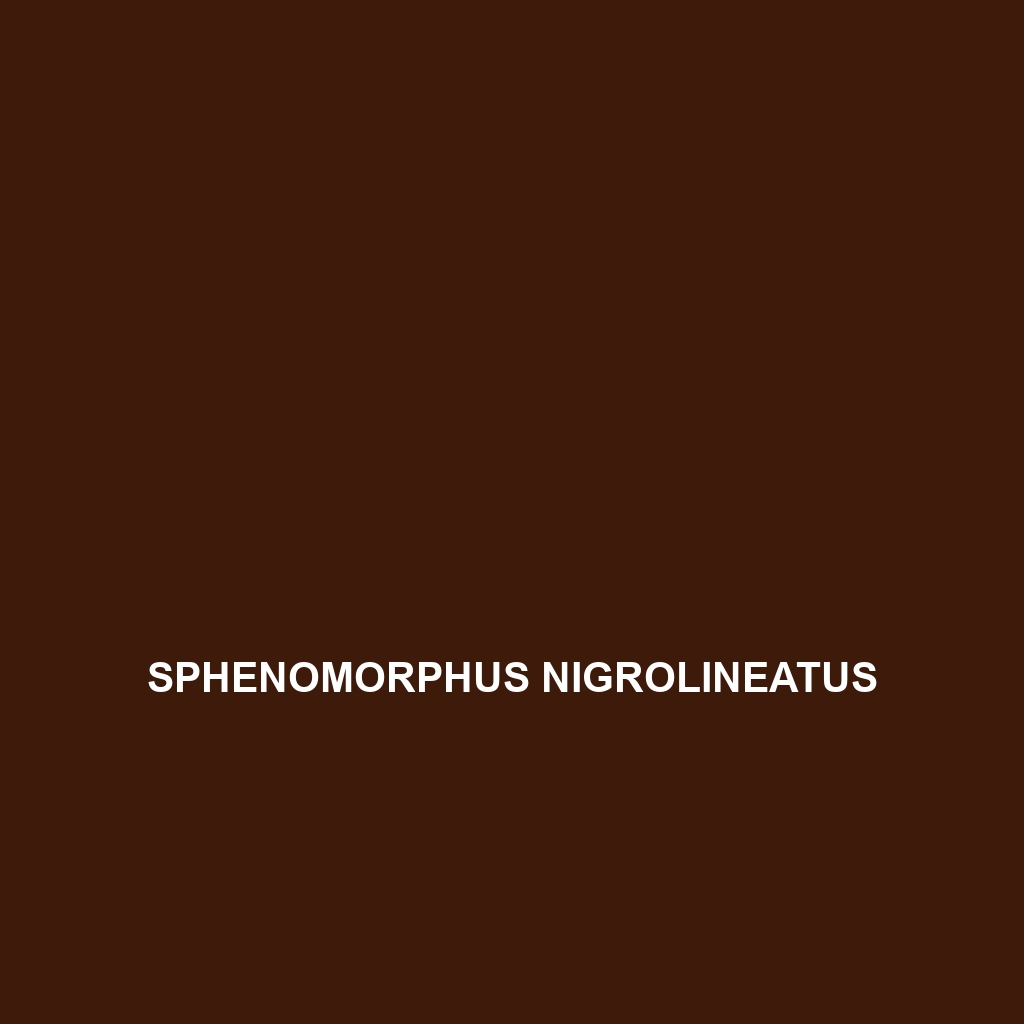Discover the stunning Sphenomorphus sanana, or Sanana skink, a vibrant insectivorous reptile found in the tropical rainforests of Southeast Asia. With its unique coloration, agile movements, and a vital role in ecosystem balance, this species showcases remarkable adaptations, including tail regeneration, essential for survival in its natural habitat.
Tag: diurnal reptiles
Sphenomorphus preylangensis
Introducing the Sphenomorphus preylangensis, or Preylang Skink – a small to medium-sized insectivore native to tropical rainforests and wet savannas in Southeast Asia, particularly Borneo and Sumatra. With its vibrant coloration, smooth scales, and agile movement, this vulnerable species plays a critical role in controlling insect populations and maintaining the ecological balance within its habitat.
Sphenomorphus papuae
Discover the Papua skink (Sphenomorphus papuae), a vibrant reptile native to the rainforests and savannas of Papua New Guinea, known for its striking olive green to brown coloration and rapid insectivorous behavior. With a slender body averaging 20-25 cm in length, this diurnal species plays a critical role in maintaining ecological balance by controlling insect populations and serving as prey for larger predators.
Sphenomorphus nigrolineatus
<p>Discover the <b>Black-lined Skink (Sphenomorphus nigrolineatus)</b>, a striking Southeast Asian reptile known for its dark body and vibrant longitudinal stripes. This diurnal insectivore thrives in tropical rainforests, contributing to ecological balance by controlling insect populations while showcasing fascinating behaviors and impressive tail regeneration.</p>
Sphenomorphus nigriventris
<p><b>Sphenomorphus nigriventris</b>, known for its striking dark belly and slender body, thrives in the tropical rainforests of Southeast Asia. This insectivorous lizard plays a vital role in its ecosystem by controlling insect populations and contributes to soil quality through its foraging behaviors.</p>
Sphenomorphus necopinatus
Discover the fascinating Sphenomorphus necopinatus, a vibrant lizard native to Southeast Asia's rich rainforests. Known for its sleek, elongated body and distinctive coloration, this insectivorous species plays a vital role in its ecosystem by regulating insect populations and serving as prey for larger predators.
Sphenomorphus murudensis
Murud Skink (Sphenomorphus murudensis): This medium-sized reptile, native to Southeast Asia's tropical rainforests, features a smooth, glossy body with striking coloration and camouflage to thrive in its humid habitat. Primarily diurnal and insectivorous, the Murud skink plays a vital role in regulating insect populations and contributes to the ecosystem's health and biodiversity.
Sphenomorphus malayanus
<p><b>Sphenomorphus malayanus</b>, known as the Malaysian skink, is a modestly sized lizard measuring 6 to 8 inches with smooth, shiny scales and a vibrant mix of greens and browns. Found in tropical rainforests and savannas of Peninsular Malaysia, it plays a crucial role in controlling insect populations while showcasing fascinating behaviors and a unique ability to camouflage in its natural habitat.</p>
Sphenomorphus longicaudatus
<b>Sphenomorphus longicaudatus</b>, commonly known as the long-tailed skink, is a diurnal insectivore found in humid, well-vegetated habitats across Southeast Asia. Recognizable by its elongated body and tail, this species exhibits remarkable agility and camouflage, playing a vital role in pest control and as a prey species within its ecosystem.
Sphenomorphus latifasciatus
<b>Sphenomorphus latifasciatus</b>, commonly known as the broad-banded skink, is a vibrant insectivorous species native to Southeast Asia's tropical rainforests, recognized for its sleek body, striking coloration, and agile movements. Measuring 10 to 15 cm in length, this skink plays a crucial ecological role by regulating insect populations and serving as prey for various predators.









